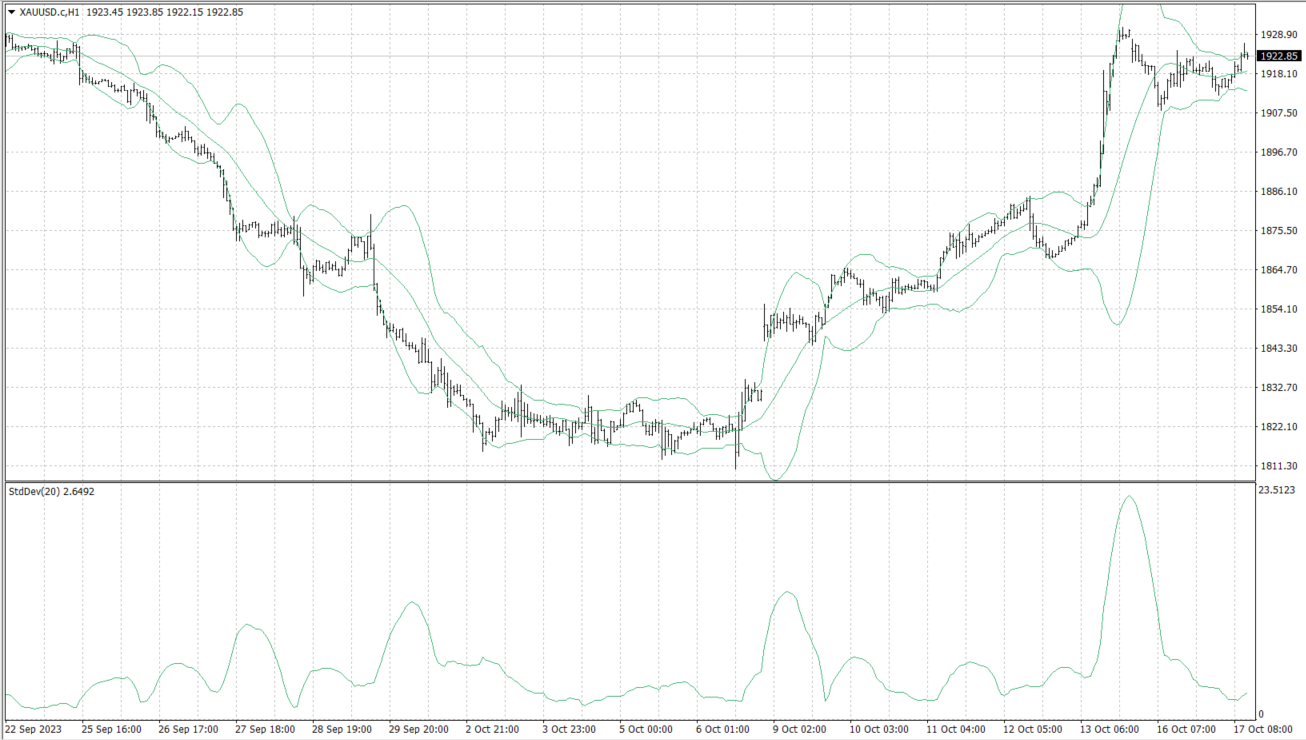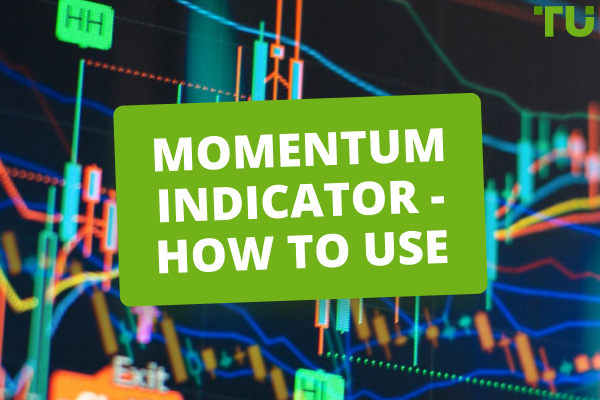What is Deviation in Forex?
Deviation in Forex denotes the variance between anticipated and actual price shifts. Traders use it to refine their entry, exit, and risk management tactics.
In Forex trading, deviation stands as a crucial metric that helps in statistically measuring the ever-fluctuating market. This measure of volatility is a valuable tool for traders, providing a means to gauge and respond to the unpredictability of events in the foreign exchange market.
By understanding what deviation is and how to use it effectively, you can unlock opportunities to make well-timed entrances and exits, all while meticulously managing risk. In the following discussion, we'll delve into the concept of deviation in forex and explore how it can be used practically in Forex trading.
What is deviation?
The deviation is a statistical measure of how much a set of data varies from the mean or average value. In forex trading, this measure is often calculated using standard deviation that helps traders in assessing the degree of variability or volatility in currency price movements.
Understanding deviation is crucial as it assists in gauging the market uncertainty and being clear regarding entry and exit points with effective risk management.
What is standard deviation in Forex?
In the context of forex trading, deviation refers to the extent of variance between expected and actual price movements in the currency market. It quantifies the degree to which an asset's price fluctuates from its average over a specific period.
The formula for standard deviation in forex is as follows:
Standard Deviation = √Σ [(X - μ)² / N]
Where:
-
1
X represents individual data points (price values)
-
2
μ (mu) is the mean (average) of the data
-
3
N is the total number of data points
A higher standard deviation indicates greater price variability and risk. It can be applied to various timeframes, from short-term intraday trading to long-term investment analysis.
What is an example of a deviation in Forex?
Let’s understand an example of deviation in forex using the Bollinger Bands indicator, and the Deviation indicator in Metatrader 4.
While using the Bollinger Bands indicator with the "Deviation" setting in the MetaTrader platform, a deviation refers to the number of standard deviations used to calculate the width of the Bollinger Bands.
Bollinger Bands consist of three lines: a middle line (usually a 20-period simple moving average), an upper band, and a lower band. The upper and lower bands are calculated based on the standard deviation of price data.
Here are the basics to interpret the deviation in forex using Bollinger Bands and the Deviation indicator in MetaTrader:
-
1
Select the Bollinger Bands Indicator - In MetaTrader, you can add the Bollinger Bands indicator to your Forex chart by selecting it from the list of available indicators
-
2
Set the Deviation - When you add the Bollinger Bands indicator, you'll have the option to specify the deviation. Deviation is a parameter that determines the width of the bands. A common value for deviation is 2.0. This means that the upper and lower bands will be drawn two standard deviations away from the middle (20-period SMA) line
-
3
Interpreting the Deviation - A deviation of 2.0 standard deviations implies that the Bollinger Bands will encompass approximately 95% of price data within their width. In simple words, when the price approaches or touches the upper band, it's considered relatively overbought, and when it approaches or touches the lower band, it's considered relatively oversold

Source: Metatrader platform
Now that the basics are given, let’s try to interpret this deviation in the above-given forex chart:
Here you have XAU/USD displayed on your MetaTrader chart with Bollinger Bands set to a 17-period SMA and a deviation of 2.6492. If the price of XAU/USD moves to the upper Bollinger Band, it suggests that the currency pair is relatively overextended, and there might be a potential for a reversal or retracement.
If the price touches the lower Bollinger Band, it means the currency pair is relatively oversold, and there might be a potential for a price bounce or reversal to the upside.
Here’s a more detailed article for you on What are Bollinger Bands & How they work.
How to use deviation in Forex?
-
1
Identifying Trading Opportunities
Deviation can help traders assess the level of price volatility in the forex market and as mentioned earlier, you can use the deviation setting when applying Bollinger Bands to identify potential entry and exit points. It also assists you with mean reversion strategies -
2
Managing Risk
Deviation can be used to manage risks by adjusting the size of trading positions. In more volatile conditions (higher deviation), smaller positions might be preferred to manage risk. Conversely, in less volatile conditions (lower deviation), larger positions might be considered. -
3
Timing Market Entries and Exits:
- a. Breakout trading - Deviation can help identify potential breakout points. When the price moves beyond the Bollinger Bands (indicating higher-than-average deviation), it may signal the start of a new trend or a significant price movement, which can be used for entries and exits
- b. Reversal trading - Deviation can assist in spotting reversal opportunities. When the price reaches the extreme levels of the Bollinger Bands (high or low deviation), you can consider this as a potential reversal point and plan their entry or exit accordingly
-
4
Confirmation of Other Technical Analysis
If a trader identifies a trend reversal pattern or a key support/resistance level and sees that the deviation also indicates overbought or oversold conditions, it can add confidence -
5
Risk Management and Trading Psychology
Understanding deviation and its impact on volatility can help in maintaining discipline and emotional control
Best Forex Brokers


Conclusion
Deviation acts as a barometer for price volatility, enabling traders to adapt their strategies to different market conditions, from seizing short-term opportunities in high-deviation environments to capitalizing on stable trends in low-deviation situations.
Furthermore, the deviation is essential in risk management, allowing traders to adjust position sizes and stop loss levels as needed. In mastering the nuances of deviation, traders can effectively identify trade opportunities, manage risk, and cultivate sustainable profitability in the dynamic world of forex trading.
FAQs
What does deviation mean in MT4?
The MT4 trading terminal has both the indicator of the same name and the Deviation parameter in other indicators (such as Bollinger Bands). Deviation means how much the current price has moved away from its average values.
How to set deviation in forex?
After selecting a currency pair, you need to set a deviation indicator to chart from the list of indicators your trading platform has provided. Once you set the deviation indicator, you can now set the deviation value which will depend on the risk tolerance and trading strategy.
How to Use a Standard Deviation Indicator in Forex Trading?
The Standard Deviation indicator in forex helps assess price volatility. Traders use it to measure market fluctuations and make informed decisions based on price variability.
How to Trade Forex with Standard Deviations?
Trading forex with standard deviations involves using deviation data to identify potential market reversals or breakout opportunities, adjust risk management parameters, and determine optimal entry and exit points based on price volatility.
Team that worked on the article
Upendra Goswami is a full-time digital content creator, marketer, and active investor. As a creator, he loves writing about online trading, blockchain, cryptocurrency, and stock trading.
Dr. BJ Johnson is a PhD in English Language and an editor with over 15 years of experience. He earned his degree in English Language in the U.S and the UK. In 2020, Dr. Johnson joined the Traders Union team. Since then, he has created over 100 exclusive articles and edited over 300 articles of other authors.
Mirjan Hipolito is a journalist and news editor at Traders Union. She is an expert crypto writer with five years of experience in the financial markets. Her specialties are daily market news, price predictions, and Initial Coin Offerings (ICO).









